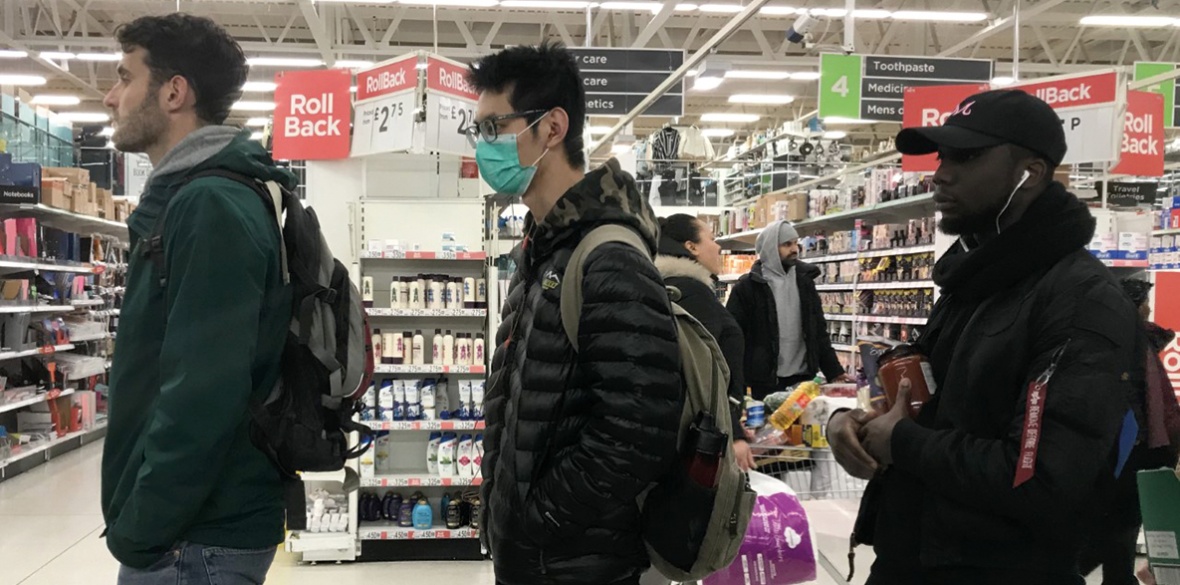This is the last article you can read this month
You can read more article this month
You can read more articles this month
Sorry your limit is up for this month
Reset on:
Please help support the Morning Star by subscribing here
ONE of the Covid inquiry’s first findings is that government made no plans to address ethnic health inequalities in their emergency pandemic planning: the virus found these inequalities, leading to higher death rates among ethnic minorities.
I can remember pressing the Cabinet Office over its failure to have anti-Covid plans for minorities during the pandemic. The Covid inquiry says this was a deep-rooted problem.
Almost all ethnic minorities were more likely to die of Covid than white people, with some minorities having death rates four or five times higher than white people.
Health advisers Professor Sir Michael Marmot and Professor Clare Bambra were commissioned by the inquiry to write an expert report on health inequalities. Their general finding was that we were in a bad place before Covid because “the UK entered the pandemic with its public services depleted, health improvement stalled, health inequalities increased and health among the poorest people in a state of decline.”
Marmot and Bambra carefully examined emergency planning for how to stop inequalities, including race inequalities, fuelling a pandemic.
They found there were some plans back in 2011. A 2011 Department of Health Pandemic Preparedness Strategy includes an “analysis of impact on equality.”
The department said there were inequality issues and “a future strategy would seek to address issues arising from this by considering targeted advertising in ethnic media or via stakeholder communications from trusted community voices where this was indicated. It is our standard policy to produce material in a range of different languages, which are chosen under advice from the Central Office of Information.”
Marmot and Bambra are fairly critical of this limited response, saying: “The equality assessment concludes that there is only one significant area of concern — and that is regarding communications for non-English speakers.”
Higher Covid death rates among ethnic minorities could come from pre-existing health inequalities meaning black and Asian Britons might have more “pre-existing conditions.”
They might come from social inequalities, with ethnic minorities working in more Covid-hit jobs — like bus drivers — or being more likely to live in more cramped houses or multi-generational families.
So language is just one issue. But at least the government considered this in 2011. Also the plan was bigger than language — using “trusted community voices” means socially, as well as linguistically, reaching out to our minority populations.
But this minimal decision to include a “policy of targeting specific ethnic groups where appropriate” simply disappeared after 2011.
Partly austerity was to blame. The Central Office of Information — the organisation that used to do all those scary “public safety” videos — was supposed to advise on approaching minorities.
But it was abolished in 2011, as the coalition government sought cuts and the end of the “nanny state.” You might recall the lack of public information films during Covid — far less than most countries. This was because the COI had been binned.
Partly it was because the government cared less about ethnic inequalities. So Marmot and Bambra find that in 2016 there is a new anti-pandemic plan, “Operation Cygnus.”
They say the “Cygnus report mentions planning for local surges — but the potential role of area-level deprivation or other community characteristics (eg the ethnic composition of the population) in leading to local surges is not discussed.”
When Covid breaks out in 2020, in the early meetings of the expert advisory group Sage, “there is no mention in the minutes of these early planning meetings of any other aspects of inequalities such as protected characteristics (such as ethnicity or gender), or other axes of inequality such as income, area-level deprivation, or region.”
I can remember back in July 2020, in the middle of the pandemic, a charity called Doctors of the World was desperately pushing the government to do more for Britons for whom English was not a first language.
They had, with their own small resources, translated some Covid advice and found this was being downloaded from their website thousands of times.
They begged the government to do more, briefing MPs on the home affairs select committee about the lack of materials for those who “do not speak or read English well,” meaning “many have not been able to access crucial information on how to identify Covid-19 symptoms, how to access NHS services when needed and how to follow public health measures.”
This included the asylum-seekers they helped, many of whom were at “high risk” and “living in overcrowded accommodation.”
But the government had little will to fix this: when I approached them, the Cabinet argued: “The government remains committed to improving English language training and boosting integration across the country.” Even in a pandemic, they said the problem was minorities needed to do more to “fit in.”
The government also had less means to fix this — the Central Office of Information regularly advised government how to ensure “outreach” to “harder to reach” groups.
But it had been abolished: instead, Covid communications were done through contracts with advertising agencies like Mullen Lowe which did not have that expertise.
It turns out it wasn’t only campaigners who were worried. Marmot and Bambra found during the pandemic NHS Confederation members “told us that information and advice directed at the public was not specific enough and not always disseminated in formats and languages that were accessible to all groups, eg ethnic minorities and disabled people.”
Chief scientific adviser Patrick Vallance tried to force change during the pandemic: he commissioned the Academy of Medical Science to produce an “expert report” in July 2020.
The academy argued for “public information campaigns” aimed at and produced with “minority groups.”
This meant not just language but “co-production,” where minority groups are involved in creating and disseminating health campaigns.
It involves materials that are “co-produced, culturally sensitive and tailored with community ownership.”
“Co-production” is a widely recognised public health measure, but the government wouldn’t do it. Instead it weakly committed to some more translated signs and to have translation services for “contact tracing.”
Health comms aimed at minorities is just one small element of an anti-pandemic strategy that considers health inequalities, but even this element was not taken up by the government.
The government comes out very badly from this story, but Doctors of the World were, and are, very impressive. You can donate to them at their website doctorsoftheworld.org.uk.









